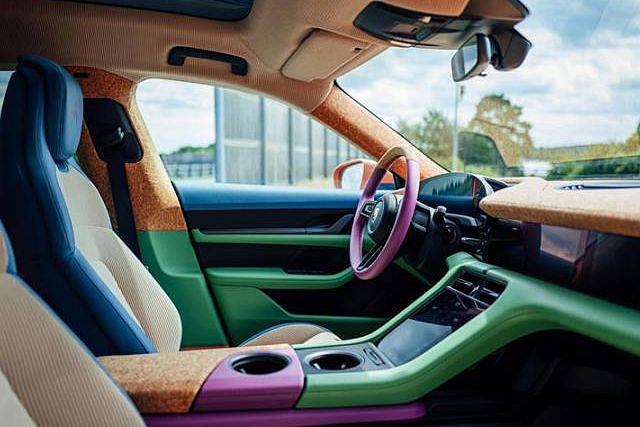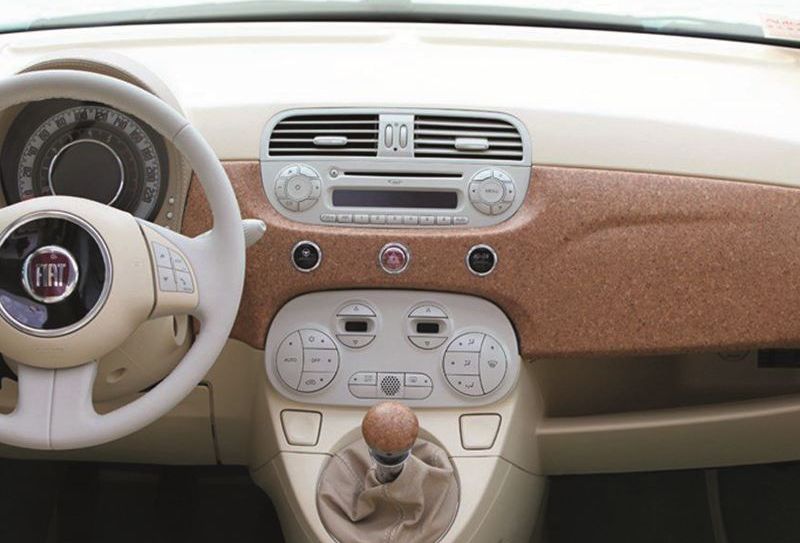Cork in transport

In public transport, cork plays a key role as an insulating agent, reduces vehicle weight and contributes to reducing energy consumption. It also serves as decorative elements, e.g. in the case of cars or airplanes. It is even a key material when it comes to safety. This is the case with rockets and landers of space agencies such as NASA.
Porsche collaborated with designer and influencer Sean Wotherspoon to create a colorful car with the same theme. Based on the Porsche Taycan 4 Cross Turismo, the car takes inspiration from the Harlequin while taking the concept to the next level, even borrowing the interior theme.
As a vegetarian, Wotherspoon wanted to make sure the car’s interior was not covered in leather, so he used corduroy (a material already used in the 911 Targa Heritage Edition) and cork (a material obtained from the bark of the cork oak tree) for the headliner, seats and sun visors. visors, as well as on the dashboard, pillars, center console, steering wheel and floor mats.

Fiat Fiat 500 Spiaggina
Decorated in two shades of sky blue and pearl white, this Spiaggina is typically summery, with no roof like the original and no rear seats, as it now has a cork-adorned storage compartment and an integrated shower, presumably designed to remove sand after a day at the beach.
The model pays tribute to the world of sailing, such as a low windshield (almost non-existent) and a cork structure covering the rear with a pattern imitating teak-floored boats used on board, yachts.
Cork can be combined with various thermoplastic materials, partially replacing plastic and creating more sustainable end products.
These materials can be processed using various production techniques – such as extrusion, injection, thermoforming, blow molding or continuous pressing – to create components fully tailored to the customer’s technical requirements.
Cork polymer blends (CPC) can also be visually customized to suit the aesthetic needs of the final design.

The use of cork composites helps reduce weight and, as a result, reduce power costs. Additionally, thermal comfort and the lack of noise are important, which the cork also has a significant impact on. The railway industry is one of the segments of the economy where energy consumption is important in the context of economics and ecology.
The high stress parameters of cork composites developed in laboratories with the safety of railway passengers in mind are also important. It is also worth mentioning that the German company Siemens is the co-author of a solution that allowed the use of a light and flexible cork floor in the Warsaw metro.
The last but not least important parameter of the cork is fire safety. This last parameter was the main reason why NASA, for nearly half a century, has used a mixture of cork and other materials to protect the skins of its rockets, which must endure extreme temperatures as they pass through the atmosphere. In airplanes, cork is used to create finishes or, as in trains, to reduce the weight of the machine. In yachts, next to teak wood, it is the most popular solution.
A suitable cork composite is resistant to moisture and heating from the sun. The automotive industry is also a very popular place where cork is used. Brands such as BMW and Mercedes use cork finishing for car interiors, such as dashboards. Rubber cork and its use in the form of car seals as a more ecological alternative to rubber are also popular.
